Growing the Flower Garden And Myself
In Part 1, I shared that I thought I wanted a flower farm, but what I really wanted was a flower garden.
I don’t think I could have envisioned what we have without getting my hands in the dirt, season after season.
Our flower garden didn’t come from a detailed plan. It grew because we worked it. Because we tried, failed, adjusted, and tried again.
Back then, I was inspired by all the beautiful flower photos I saw online especially the big, bold blooms like peonies, dahlias, and roses. But at the time, I didn’t understand our soil, our climate, or even our pace of life. I only knew what looked pretty.
As I mentioned in Part 1 of my flower garden story, we started simple with three raised beds of zinnias. Then we added more. Eventually, we had about twenty raised flower beds. There are so many pros to that: we could control the soil, deal with fewer weeds, and easily add wire mesh to protect our dahlia tubers from voles.
But the truth is, they dry out faster even the large ones. And in our summer heat, anything planted directly in the ground holds moisture better and just needs less from me. We have clay soil. This means we amend the soil and we do add compost.
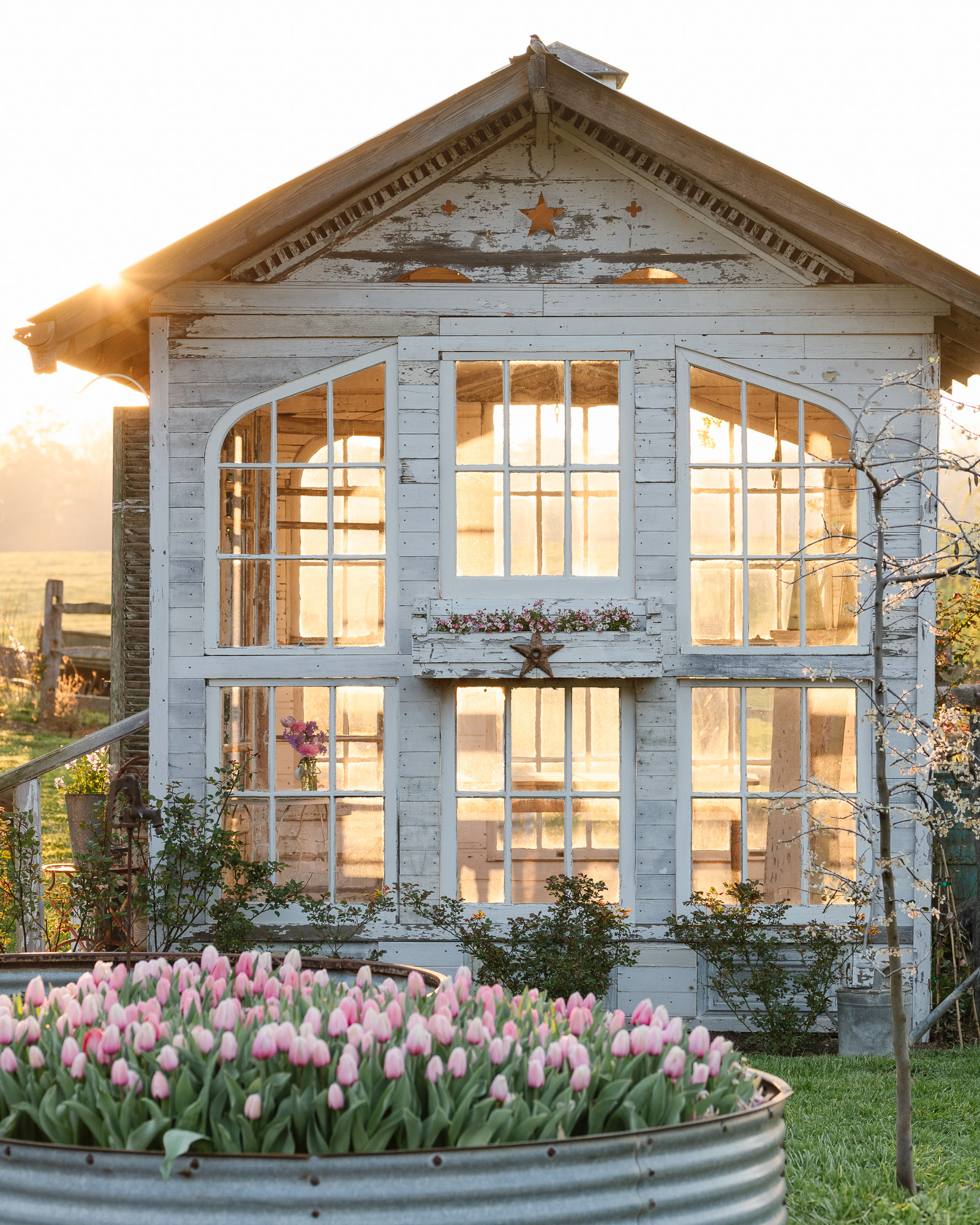
The Shift Toward a Flower Garden
We’ve kept three silo rings where I usually plant tulip bulbs in the fall and annuals in the spring. We’ll also keep our original three raised beds for zinnias.
The biggest change, though, came when we started dreaming about pathways. We wanted the flower garden to feel like a garden, not a small farm. The rows of raised beds looked beautiful when they were filled with dahlias, but when you stepped inside, the layout felt closed off. There wasn’t a softness or sense of invitation.
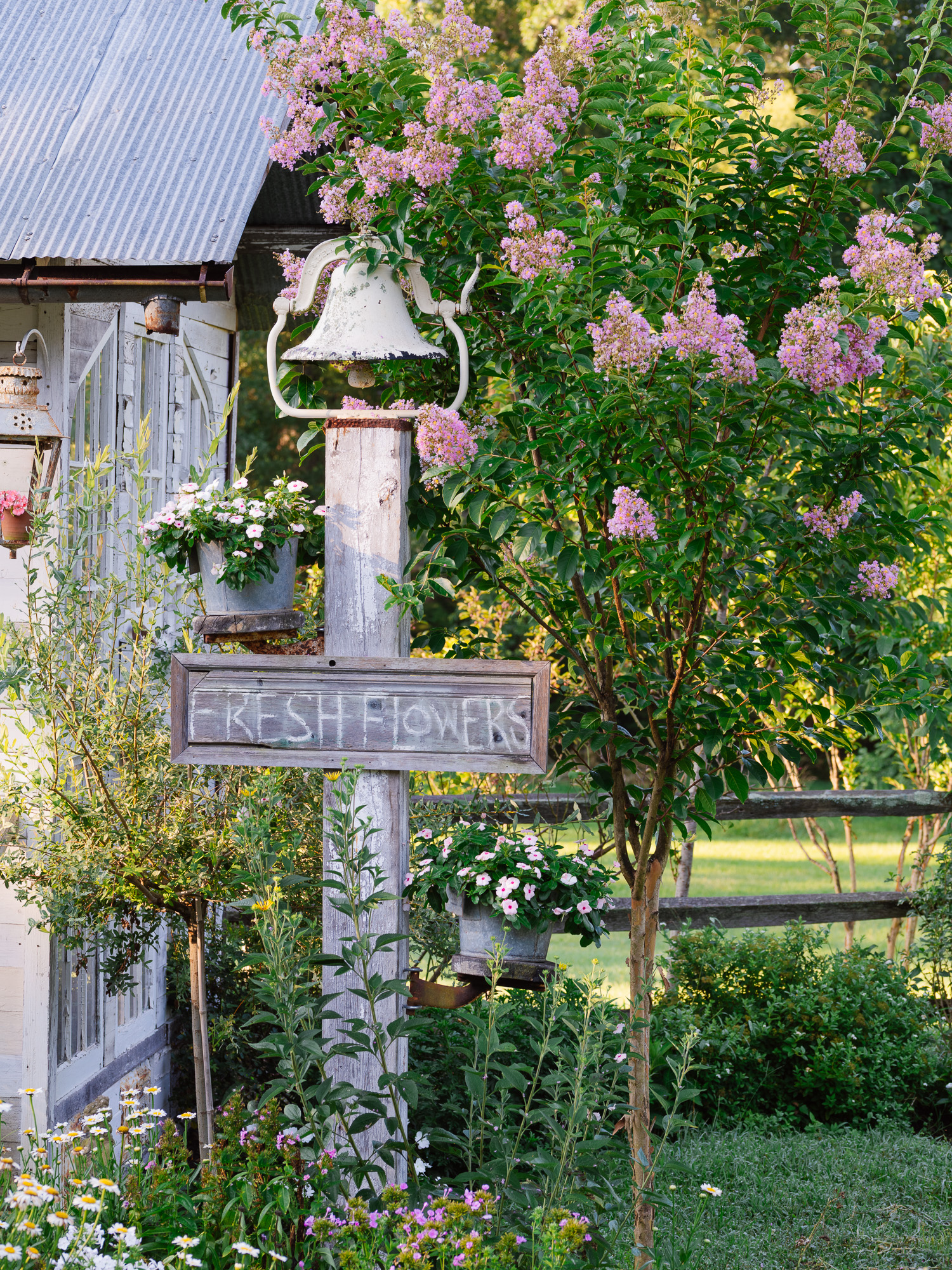
By that time, my husband had built the flower house, and we had added a vintage farm fence we found on Marketplace. The fencing wrapped the garden in a hug, defining the space from the rest of our property. That’s when we started taking the raised beds out and designing something that flowed. Curved borders, pink granite stepping stones, birdbaths, fountains, a few unique urns, vintage bell and clock.
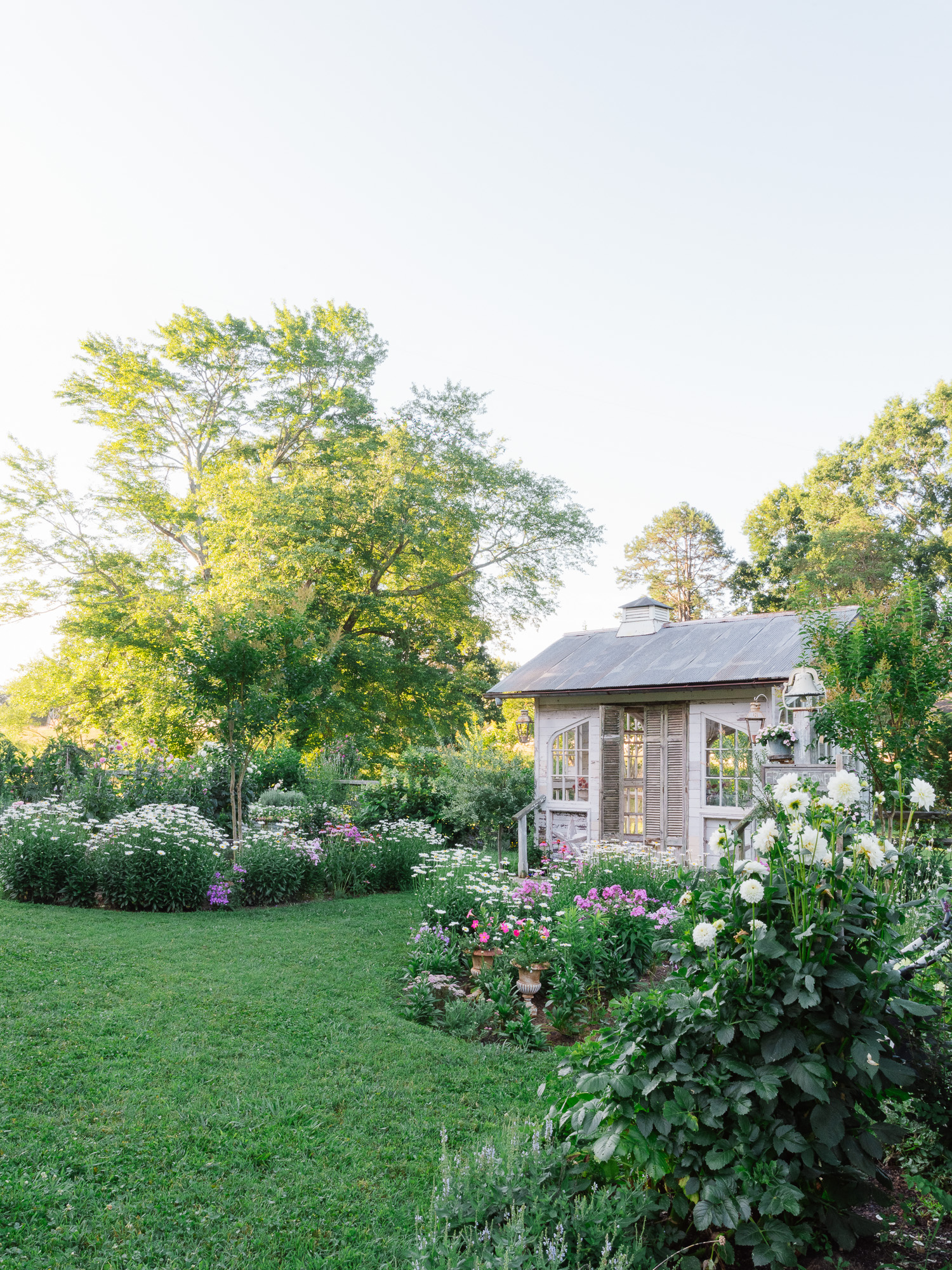
The softer shapes began to take over, and the whole space started to feel storybook.
The garden began to feel more like us.
Like most people starting out, we tried growing everything. Dahlias, dozens of flowers from seed, and roses, peonies, and hydrangeas. I quickly learned dividing dahlia tubers was not my favorite or trying to protect them from voles. We leave our dahlias in the ground over winter, but they still need to be divided. I’ll always grow dahlias, but they’re no longer the stars of the garden.
We also ended up removing most of our roses. The humidity here made it almost impossible to avoid blackspot. Pests love them, and I didn’t want to spray. I still love roses but, they’re just harder to grow in our climate. And that’s okay.
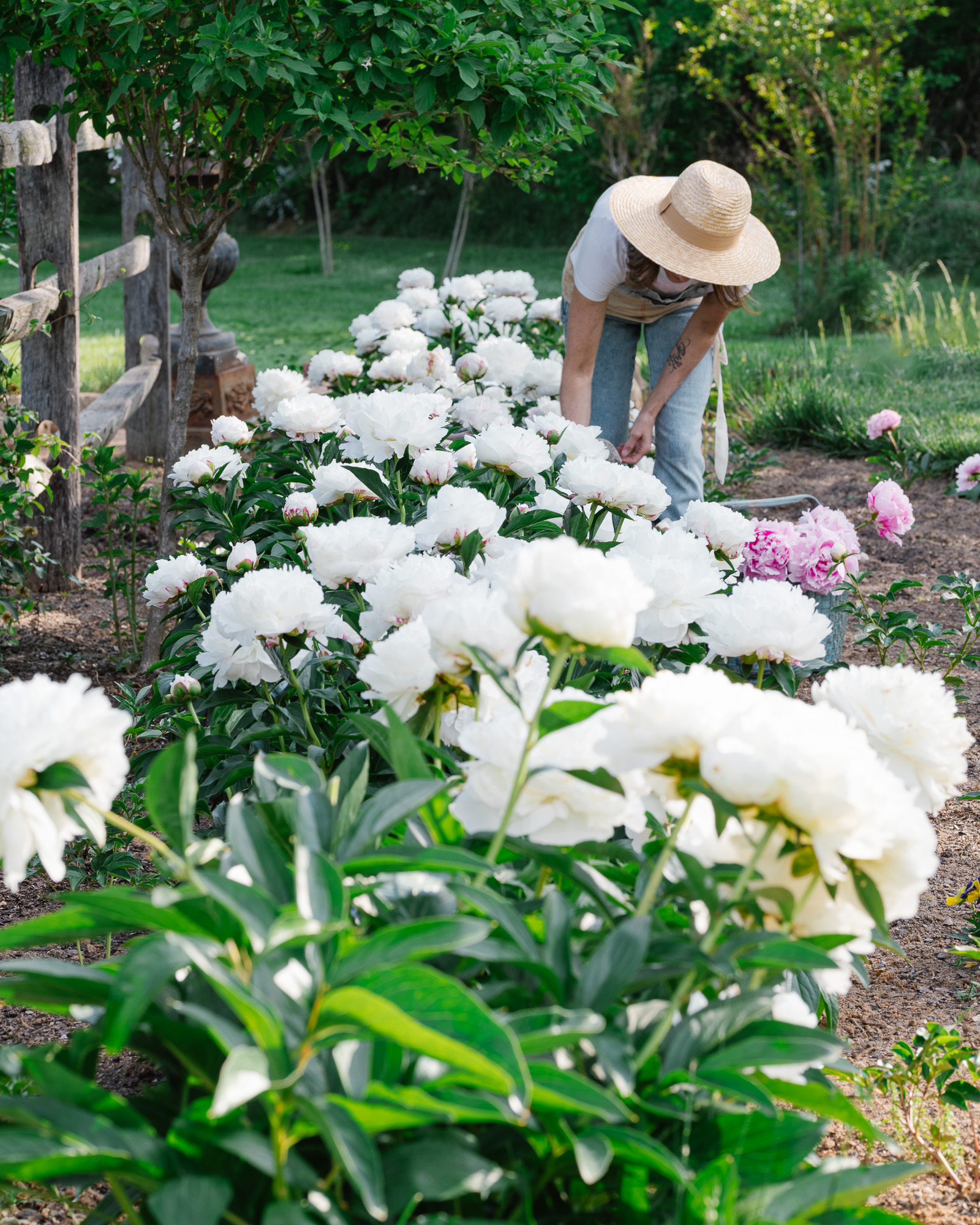
Even though we had plenty of peonies, I didn’t initially think about growing them in abundance. Their season is short. One flush of blooms, and then they’re done. But after several years of growing flowers, I realized how much I love those big, fluffy blooms. They’ve become my favorite to photograph. They bloom just before the heat settles in, and I’ve come to love that fleeting window. Once established, they’re hardy, and deer and beetle resistant.There’s such peace in that.
Now, our garden has its own rhythm. Daffodils bloom in February, followed by tulips and perennials that return like old friends. Spring into early summer is our beautiful season, with peonies putting on the most stunning flower show. By July, the zinnias add a burst of color and the butterflies love them.
By then though, we’re in survival mode. Just trying to keep things alive through the heat and humidity.
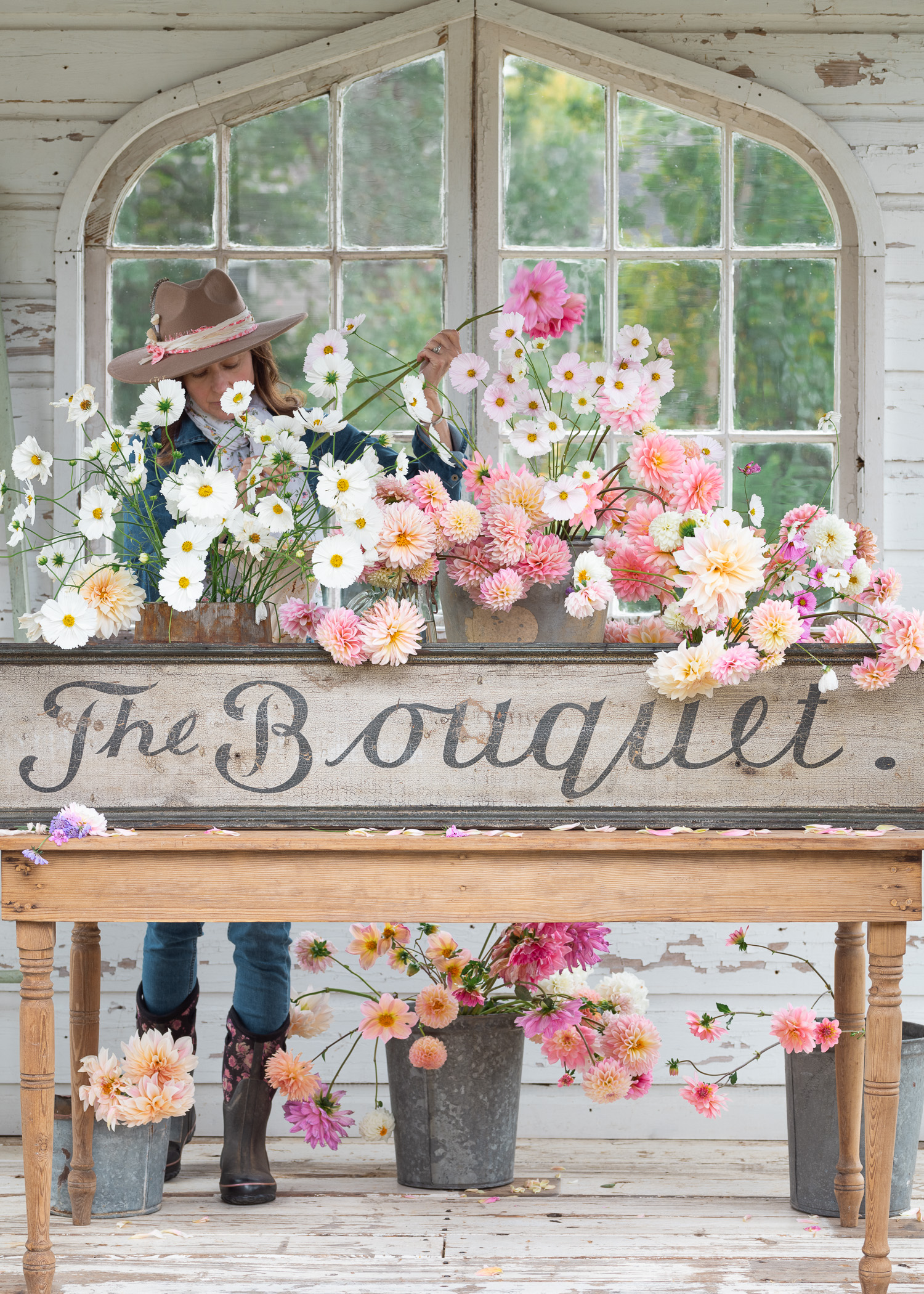
What I’ve Learned So Far
One thing I’ve learned: don’t just go by your USDA zone. Learn your actual climate. Someone in your same zone might have completely different soil, pests, humidity, and challenges. And most of that doesn’t show up in an Instagram photo.
We’ve had to learn how to work with our clay soil and we’re still learning. Clay holds moisture, which most flowers don’t love. It takes time to figure out how to amend it. For plants like lavender that need better drainage, we’ve added sand. It’s trial and error.
And pests? Japanese beetles have been our biggest nightmare. No one told me how relentless they’d be. Just when everything is blooming, they show up.
If I could offer one tip from all of this: learn from everyone, but find someone growing flowers in your area or in a similar climate. It will make the biggest difference. You really can’t imagine what it’s like to tend to a flower garden in this kind of heat and humidity until you’ve stood in it. So far, this summer is the third hottest on record in our area. Just this past week, we’ve had extreme temperatures and humidity that wilts even the most determined gardener.
Even with all the heat especially the last week it’s still worth it.
The flower garden feels alive and peaceful like stepping into a story. There’s structure, but also softness. The paths are lined with flowers that want to be here.
It invites us in, slows us down, and somehow makes everything feel more gentle. It reflects the rhythm of our life and the choices we’ve made together.
This journey has been personal and deeply felt. Every flower, every season, has taught me more about myself and what it means to grow with intention.
kindly, xo
Jane
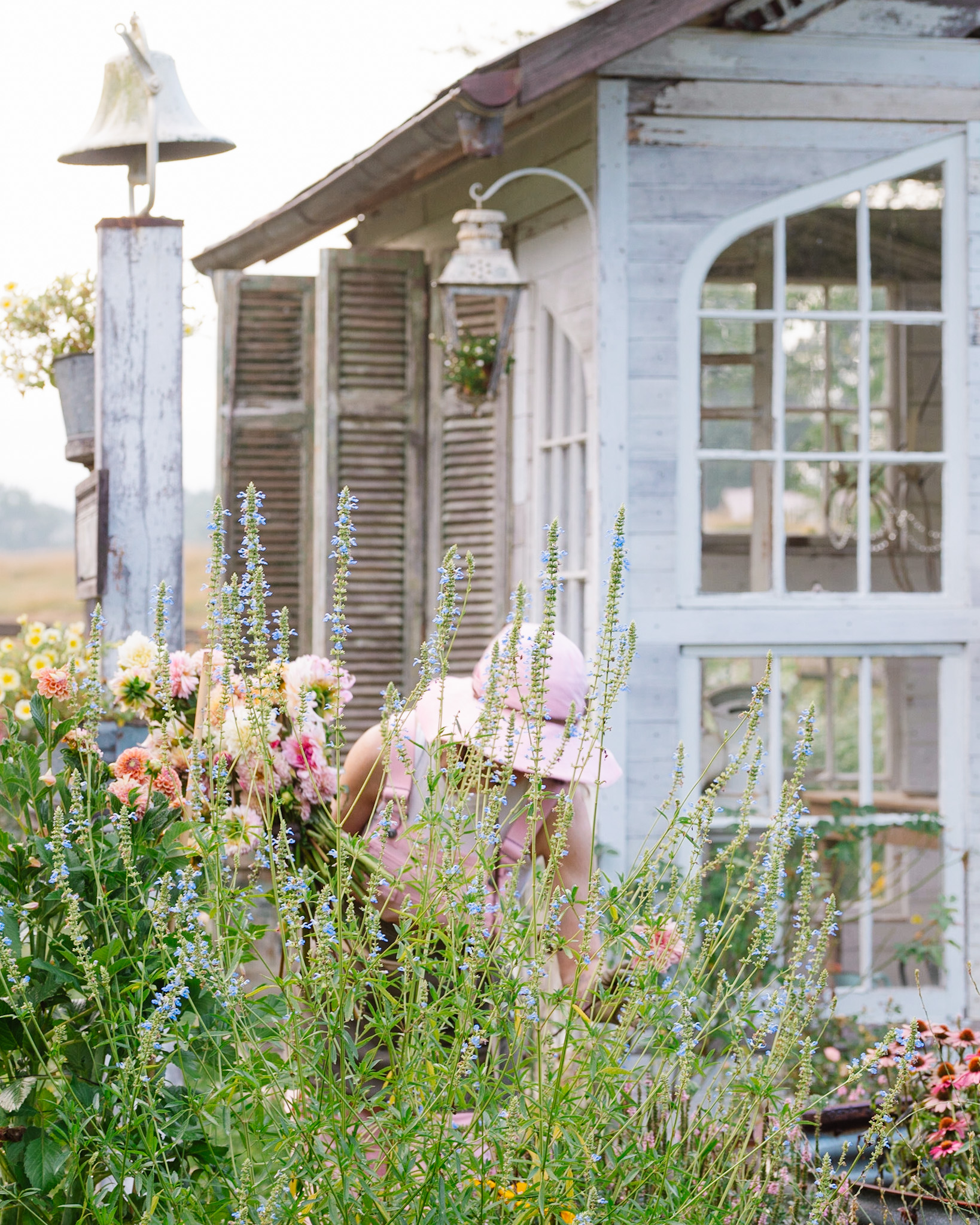
One Comment
Thank you for sharing your story Jane. Beautiful and helpful. Our humidity sounds similar and I can relate to getting up before daylight to tend to the garden. I agree it is worth it
Carole